Spices – those aromatic, exotic, and often fiery ingredients, have played an integral and enduring role in shaping the global culinary tapestry. At the heart of this captivating narrative is India, celebrated as the "Land of Spices." The history of spices stands as a testament to India's enduring influence on global gastronomy. These unassuming yet potent ingredients have shaped culinary history, kindled exploration, and fostered the fusion of diverse flavours and cultures.
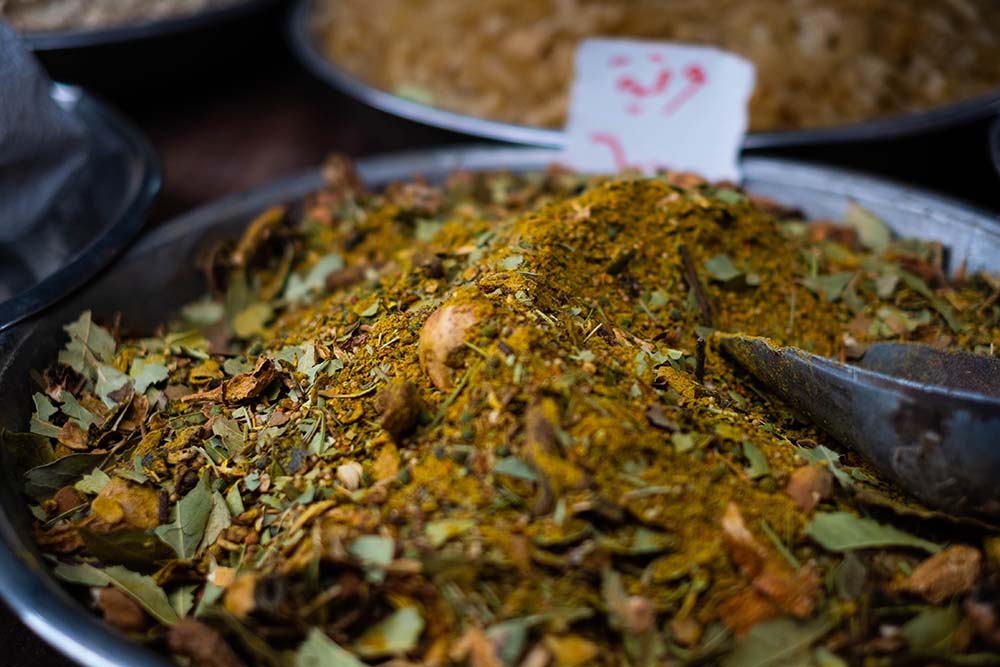
During 2022-23, the export of spices/spice products from the country has been 1404357 tons valued Rs. 31761 crore (3952.60 million US$).
In this sensory exploration, we embark on a journey through the world of spices, tracing their path from ancient trade routes to their profound and intricate impact on global cuisine. India's spices are not mere seasonings; they are the heartbeat of a nation's cuisine, a symphony of flavours celebrating the incredible diversity of this beautiful country.
India's Spice Legacy
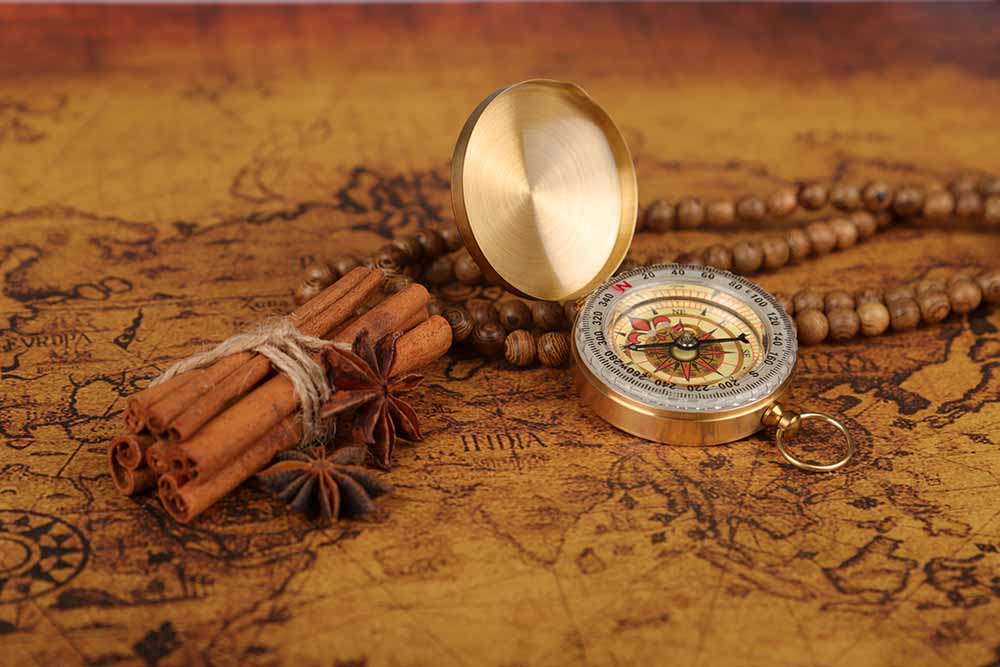
The history of spices stands as a testament to India's enduring influence on global gastronomy
India's contribution to the spice trade is a timeless tale that spans millennia. The history of spice trade in India dates back over 4,000 years. As early as 2000 BC, India was already a significant centre for the cultivation and trade of various spices. Spices like black pepper, cardamom, and cinnamon were highly prized and sought after by traders from distant lands.

As early as 2000 BC, India was already a significant centre for the cultivation and trade of various spices.
India's diverse climate and geography made it an ideal region for cultivating a wide range of spices. Different parts of the country were known for producing specific spices. For example, Kerala in the southwestern region of India was famous for its black pepper and cardamom, while regions like Kerala and Karnataka were known for their robust production of spices like turmeric.
The Vedas, which are among the oldest sacred texts of India, contain references to the use of spices. They not only described the culinary uses of spices but also highlighted their medicinal properties. Spices were used not only to flavour food but also for their therapeutic and healing properties.
India's Spice Variety: A Cornucopia of Flavours
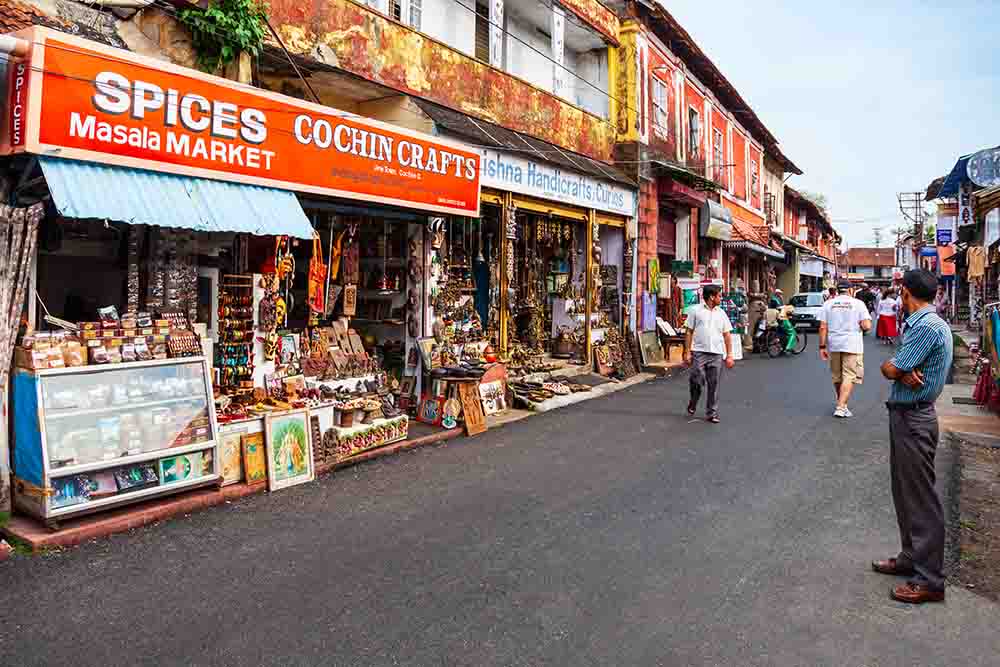
Busy spice market in Kochi.
India's diverse geography, from lush coastal Kerala to the arid Rajasthan desert, has gifted it a remarkable variety of spices. From the intoxicating fragrance of cardamom and cinnamon to the bold, fiery heat of peppers and the vibrant hues of turmeric, each region contributes its unique flavours.
In the southern regions, Kerala's coastal beauty yields aromatic spices like cardamom, black pepper, and cloves. In the arid north of Rajasthan, you find earthy flavours like cumin and coriander. North Eastern states offer exotic elements like bamboo shoots and fiery Bhut Jolokia chilli peppers. Western Gujarat adds fenugreek's sweetness and asafoetida's warmth to the mix.

Bhut Jolokia chilli peppers.
These spices are the essence of India's culinary heritage, weaving together diverse regional cuisines. From the rich Mughlai dishes of the north with saffron and cardamom to the fiery southern curries with black mustard seeds and curry leaves, each spice tells a story.
So, when you savour Indian dishes or sip masala chai, you taste the essence of a land where culinary traditions are rooted in nature's gifts.
The Spice Route: A Journey Through Cultures
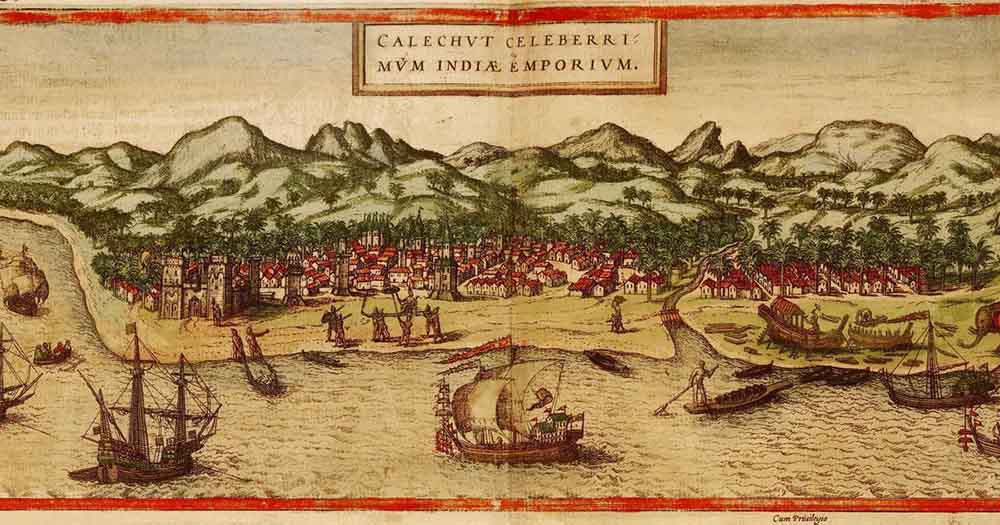
A part of the map depicting the vast maritime spice routes, linking East and West across 15,000 kilometers.
India's indelible influence on the spice trade resonated throughout the pages of history, following intricate paths along the ancient Silk Road and maritime spice routes. This fascinating journey, which began as far back as 2000 BC, wove together the destinies of nations and cultures, leaving an enduring legacy. A vast and impressive network of sea routes spanning over 15,000 kilometers connected the East and West, running from the western coast of Japan, through the Indonesian archipelago, around the Indian subcontinent, and extending to the Iranian Plateau, the Arabian Peninsula, and finally reaching Europe. These maritime routes were instrumental in enabling the extensive trade of spices and constituted a vital component of the broader trade networks encompassed by the Silk Roads.
Black pepper, cardamom, and cinnamon, among others, emerged as India's prized treasures. Traders from Rome, Greece, and the Middle East yearned for these exotic spices, considering them more than mere ingredients. Historians such as Pliny the Elder, in the first century CE, keenly observed the transformative role of Indian spices. He aptly noted, “Without Indian spices, our Roman cuisine would be insipid,” highlighting their immense importance in ancient Roman gastronomy. During the medieval ages, these spices were in such high demand that they were often referred to as ‘black gold’.
The Age of Exploration
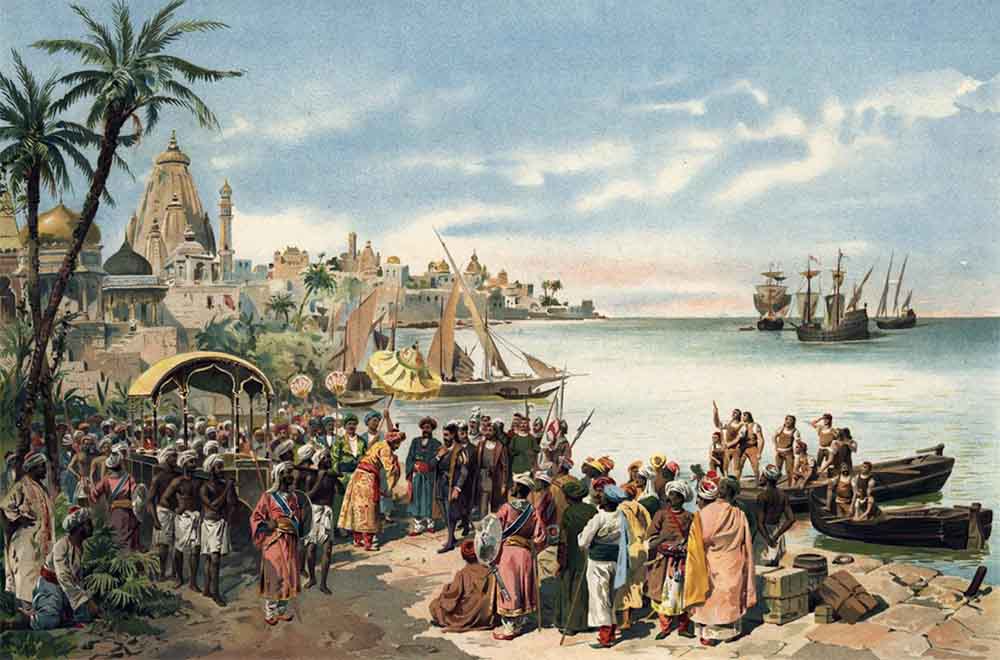
Vasco da Gama's 1498 Calicut landing reshaped the Portuguese Empire's economy, redirecting its focus from West Africa to the Indian spice trade.
In 1498, Vasco da Gama embarked on a ground-breaking voyage, discovering a direct sea route to India. On the 20th of May in 1498, Vasco da Gama made his historic landing in Calicut. This momentous event granted the Portuguese Empire unopposed access to the lucrative Indian spice routes, causing a seismic shift in their economic fortunes. With this newfound access to the treasures of the East, a new era of prosperity and influence was ushered in for Portugal, solidifying its position as a major player in the age of exploration and global trade.
In the wake of this discovery, European powers, starting with Portugal and later Spain, the Dutch, and the British, embarked on a relentless quest to dominate the spice trade. This pursuit led to the era of colonisation and global exploration. During this period, the Spice Islands, now part of Indonesia, emerged as pivotal hubs in the spice saga. Their spices were so highly coveted that they ignited intense rivalries among European powers, profoundly impacting world events.
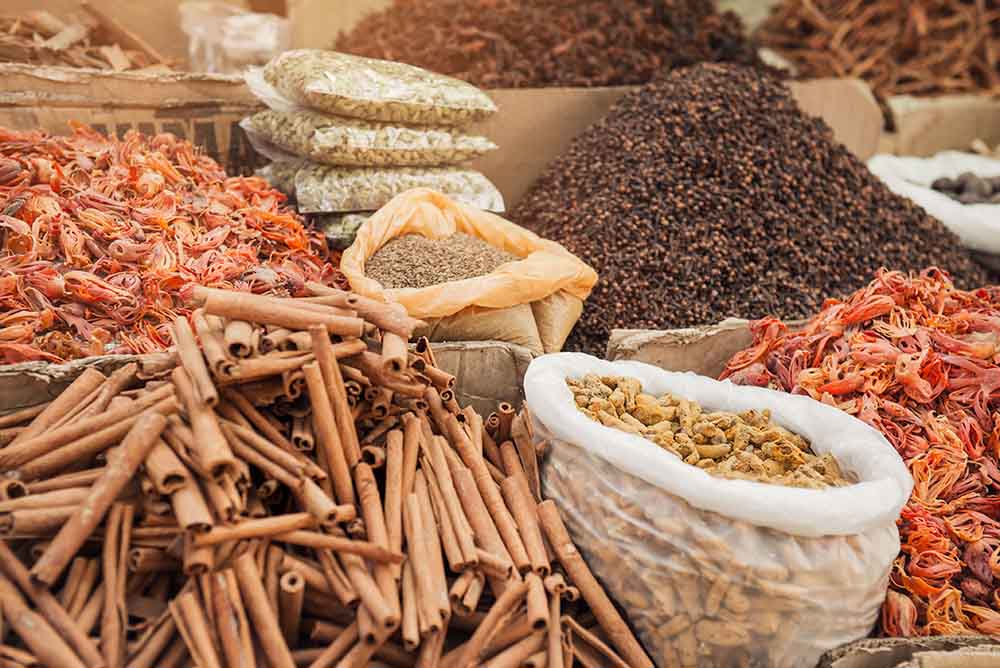
Over the centuries, India maintained its status as the epicentre of spice production and trade.
Indian spices, often referred to as "The Spice Garden of the World," reached distant corners of the globe, leaving an indelible mark on the cuisines of numerous nations.
The Influence of India's Spices on British Colonisation
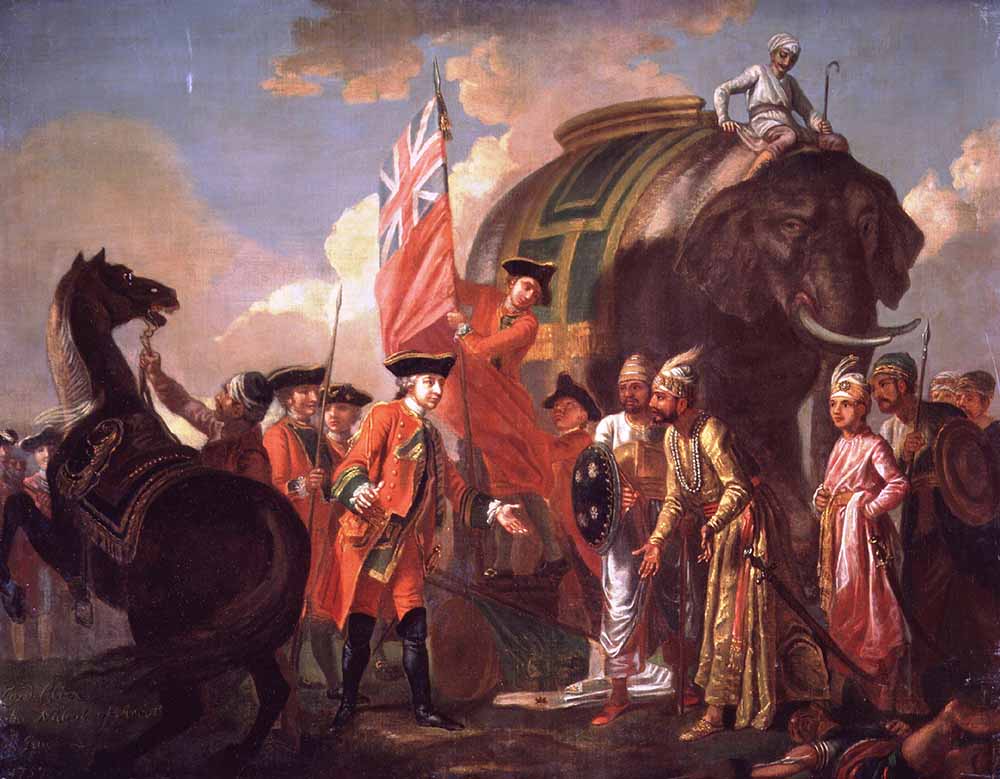
The British East India Company initially aimed to trade with the East Indies but ultimately focused on commerce in the Indian subcontinent and China.
India's exotic and highly sought-after spices had an indelible impact on the course of history, particularly during the era of British colonisation. The British East India Company, driven by the allure of India's prized spices, including pepper, cardamom, and cinnamon, sought to establish a stronghold in the subcontinent.
The immense economic potential of the spice trade propelled the British Empire's interests in India, ultimately leading to colonisation. This pivotal historical moment not only reshaped the geopolitical landscape but also sparked a culinary fusion. As the British settled in India, they not only became avid consumers of Indian spices but also introduced their own culinary sensibilities. This convergence of culinary traditions marked the beginning of an exchange that left an enduring mark on both Indian and British cuisines. The legacy of this culinary exchange is still evident today, as dishes like chicken tikka masala and curry continue to be beloved favourites on British menus, highlighting the profound influence of India's spices on the British culinary landscape.
India's Spice Legacy Today

Chicken Tikka Masala has taken on a large cultural significance in Britain. It is widely considered the country's national dish.
Julia Child, a renowned chef and author, aptly said, "Once you understand the foundations of Indian cooking, you really don't need to go by the book anymore." Indian spices added depth and complexity to dishes worldwide, forever altering culinary traditions and expanding the palate's horizons.
In recent years, the influence of Indian spices has transcended borders to garner global recognition in prestigious culinary circles. Restaurants and culinary legends abroad increasingly feature Indian-inspired dishes on their menu. Such establishments have become ambassadors of this fusion, showcasing the versatility and appeal of Indian flavours on a grand scale.

In 2023, only eight Indian restaurants abroad boast Michelin stars, highlighting the absence of an indigenous Michelin guide for fine dining in India.
Statistics reveal that Michelin-starred Indian restaurants have multiplied in cities like London, New York, and San Francisco, marking a growing appreciation for India's culinary heritage. These restaurants proudly embrace India's spice blend, introducing international diners to the magic of spices and demonstrating that India's culinary influence knows no bounds.